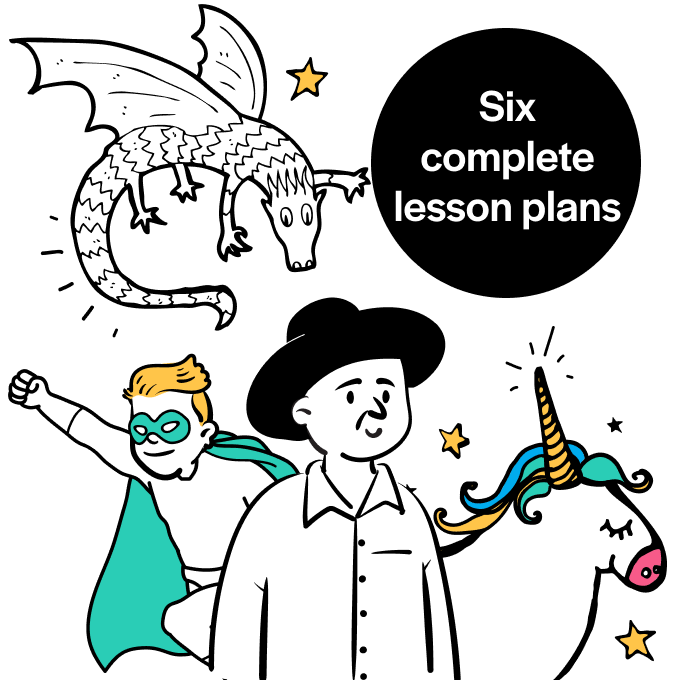10 Behaviour Management Tips to Help You Become a Classroom Leader

Unlock the door to positive teacher-student relationships with Robin Launder’s no-nonsense advice…

“If it’s good, the students will probably behave and engage in learning; if it’s not, they probably won’t.” That’s what my mentor told me on day one of my first teaching practice. She was talking about the teacher-student relationship.
“So, what’s a good teacher-student relationship?” I asked. “Well,” she said, “it’s not friendship. You don’t need a get-down-with-the-kids-I’m-cool-too-innit relationship. Do that and the kids will look down on you when actually they should be looking up to you.
No, when it comes to developing an effective teacher-student relationship, the ‘ship’ you’re after isn’t friendship, it’s leadership.” So how do you become a leader in the classroom? Simple: follow these ten top tips.
1 | Be credible
Be the best teacher you can be. Know your subject, teach it well and prioritise student learning over all other factors.
Your knowledge, your skill and your unwavering focus on the learning process will have an inevitable consequence: the students will believe in you – as a teacher and as a person. And once they believe in you, they’ll follow you.
In fact, they’ll want to follow you. But if you don’t have credibility, they’ll follow whatever competing influences there are in the classroom.
2 | Be in charge
Students want you to be in charge. Really, they do. Sure, they may test your authority, but actually it’s a test they want you to pass. Why? Because they want to be free from the pressure to misbehave and react to others’ misbehaviour.
They want the sense of safety that an orderly classroom gives. In fact, a chaotic classroom is just as stressful for them as it is for you. Well, nearly.
So be in charge. Project confidence in how you hold yourself, in what you say and how you say it. Speak with the expectation that you will be listened to – and be amazed if you’re not. Oh, and let that amazement show on your face.
3 | Have high expectations
The three types of high expectations you want are academic, behavioural and social (how the students interact with you and each other).
Now, here’s the thing with high expectations: they are flattering. High expectations tell your students that you fully believe that they have what it takes to achieve the things that you want them to. After all, if you didn’t, why would you have the expectation?
Low expectations, however, convey the opposite: that they can’t achieve, behave or get along with each other.
Here’s something else about expectations: they tend to be met. High or low, behaviour moves in the direction of the expectation.
This makes sense given that an expectation is one half of a self-fulfilling prophecy, the active ingredient that pushes the performance into either a virtuous or a vicious cycle. So make sure your expectations are high – in fact, the higher the better.
4 | Be warm
Warm means approachable, inclusive and kind; knowing the names of all your students, not just the loud ones, and using those names; taking an interest in your students as individuals with lives outside of the classroom. It means enjoying your experience with your students, allowing yourself to be won over by their charm, letting yourself laugh.
It also means letting yourself smile. Forget all that nonsense about not smiling until Christmas. Grinning is infectious and we are hardwired to do it.
A baby will mimic their mother’s smile. If the mother stops smiling, the baby gets unsettled, anxious, stressed. Exactly the same can happen in the classroom. You don’t need a fixed and manic beamer, just something light and genuine.
5 | Be contained
You might feel hurt by that boy’s personal comment, irritated by those giggly girls’ whispers or wound up by Y5’s continual chatting, but losing your temper, whether you think it is justified or not (and by the way, it’s not) won’t help.
Yes, letting off steam might feel good in the moment, but it has no long-term benefits. It breeds hostility, ruins relationships and diminishes your influence.
6 | Be clear and concise
Give students an ‘ears up’ primer such as, “This is what you are going to do.” Once you’ve given the primer, pause (for dramatic effect), and then tell the students exactly what you want them to do, clearly and concisely. No ‘ums’, ‘ahs’ or waffle. And don’t pace around either – it’s distracting.
Trending
Also, give the instruction only once; if the students weren’t listening the first time, next time they will. And don’t say ‘please’ either because it makes you sound weak.
Instead, say ‘thank you’. It’s just as respectful and gives the expectation that your instruction will be followed – after all, why else would you be thanking them if you didn’t think they’d do it?
7 | Stick to your word
The old adage is true: actions speak louder than words. But it’s also true that if you always do what you say you’re going to do, then your words will be as ‘loud’ (ie as convincing) as your actions.
If you tell the class that you’re going to return their homework on Tuesday, return it on Tuesday.
If you tell a student that you are going to phone his mum to let her know how hard he’s working, do it.
If you tell another student that you will help her with her project at break, be there waiting.
The same goes for sanctions. If it is stipulated in your school behaviour policy or in your classroom contract, or you’ve said it’s going to happen, then make sure it does – no idle ultimatums or empty promises.
When what you do is the same as what you say, then what you say will carry the weight of what you do.
8 | Be tenacious
Always (always, always, always) follow up on misbehaviour. It doesn’t have to be much of a follow-up (make it proportional to the degree of the misbehaviour), but you must do it.
And when you do follow up, focus the conversation on what needs to happen next time so that the behaviour doesn’t reoccur. A look of disappointment works wonders too.
9 | Be conspicuous
Lead assemblies, take part in extracurricular activities, run a club. Be in the corridors, the playground, the dining room. Don’t always seek the sanctuary of the staffroom.
And when you do all these out of the class activities, chat to the students. Don’t force it, just let them come to you. The confident ones will come first, followed by the less so.
Over time, your face will be known; your name will be spoken in hushed, reverential tones; and your influence will stretch to the bike sheds and beyond.
10 | Be consistent
Make sure that you are consistently all of the previous nine tips – day in, day out. Sure, you’ll slip up occasionally (when you do, apologise), but so long as your default is the above nine, then your leadership is assured.
Why? Because you will have proved yourself to be a teacher worth following – and when you’ve shown that, you’ll get a teacher-student relationship that will work for you and the children.
Robin Launder is the director of Behaviour Buddy, a company that specialises in evidence based CPD, including behaviour management CPD. He tweets at @behaviourbuddy. Read more about positive behaviour support.











